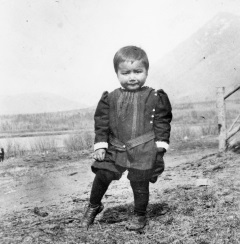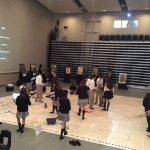
By Amanda Anderson
As I log into my eLearning environment, a series of green, circle icons indicate that many of my students are online. I teach an online Fashion course in the Ottawa Carleton District School Board, and incorporating the TRC’s Calls to Action into my daily teaching is something that is always on my mind. The course I teach was largely written by the Ministry of Education, and was published in 2010 (so likely written in 2009). Online courses are like a textbook and a workbook all in one. In the course content for this HNB4M course, there is little mention of Indigenous culture or contributions to the World of Fashion. I needed to come up with a way to incorporate more into my teaching.
In particular, this call to action speaks to me:
“Make age-appropriate curriculum on residential schools, Treaties, and Aboriginal peoples’ historical and contemporary contributions to Canada a mandatory education requirement for Kindergarten to Grade Twelve students.”
Luckily, an idea came my way when I had the privilege of attending a workshop run by the amazing Sylvia Smith (founder of Project of Heart, recipient of the Governor General’s History Award for Excellence in teaching) and Jennifer King (a representative from the First Nation Child and Family Caring Society of Canada). A group of educators from my board participated in an abbreviated version of Project of Heart, where we were given some background knowledge of colonization, residential schools, and the lasting impacts of these practices. One sub-group that has been hit particularly hard by the legacy of residential schools, the 60s Scoop, and missing and murdered Indigenous women are First Nation, Métis and Inuit women and children. Once we knew “the why”, we were then given the opportunity to create a visual piece of jewellery to remind us of these teachings. Sylvia Smith called it a “Witness Piece”.
We first chose a design to represent something that spoke to us about Indigenous women or families. I chose an image from the Internet that spoke to me – a little Inuit boy standing outside. His tiny body and his shy expression reminded me of my own son. Thinking of my child being taken from me is a terrifying notion, and in choosing this image for my necklace, I wanted to remind myself of that vicious reality for many Indigenous families. Once we chose a design (either drawing it on the wooden tile with Sharpie, or picking a printed image), we sealed the design with Modge Podge. After everything was dry, we wrapped wire around the tile to create a way to fasten the tile to a necklace. The finished product was something I am proud to wear. People have already asked me about it; it is the start of a conversation.
As a teacher, it is important for me to expose students to Indigenous issues regardless of the course. But I am especially thrilled to see how my fashion students will delve into investigating other social justice jewellery initiatives, if they will be able to tie their elements and principles of design into their necklaces, and most importantly that they have to opportunity to create a relevant gesture of reconciliation that might become something meaningful to them. They will go through the same steps of drawing their design on the tiles, sealing it with Modge Podge, and affixing the piece so they can wear it. These grade twelve students are more than little green dots on a screen. They will be graduating in ten weeks; they will be out shaping the world that we live in. I hope that throughout their public school education they have been given enough knowledge about the struggles Indigenous Canadians have faced. Hopefully, students of the future will have information about residential schools, treaties, and Indigenous contributions to Canada build into their mandatory graduation requirements. But until that point, I will keep factoring reconciliation into my online and blended classroom practices.
Amanda has shared her student handout and background presentation.
See also Justice for Indigenous Women.
Amanda Anderson teaches English Language Development and Fashion at Woodroffe High School in the Ottawa Carleton District School Board.

